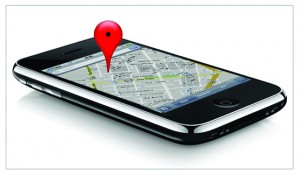Plugging Location Data Gaps in APAC


With increasing emphasis on data-driven campaigns, more brands are looking to location-based data to improve their product marketing efforts and gain a better understanding of their targeted audience. There are, however, key issues associated with data accuracy that marketers in Asia-Pacific will need to be mindful of, explains Near CTO, Madhusudan Therani, in this week's industry byliner.
In Asia-Pacific, location-based services are expected to grow at an estimated compound annual growth rate of 48.2% from USD$1.1bn (£778.1m) in 2013, to USD$11.3bn (£7.99bn) by 2019. The key growth driver in this space is mobile, where several markets in the region have some of the highest smartphone penetration rates globally. The penetration rate in Singapore, for example, is 86%, while Australia is 85%.
Location data, therefore, has become a key source in driving business decisions, including strategy, operations, and marketing in Asia-Pacific. While location data in the region has been used for targeting over the past years, we now have clients who are asking for location data to gain a better understanding of consumers.
Location-based data can be used in various scenarios. For instance, it can be tapped to tweak merchandising mix in each store based on consumer profiles to boost sales, or to enhance customer satisfaction by integrating products that consumers value. Location data also can be used to reach out to consumers at the right time and place, as well as to gain a better understanding of the audience in each geography and shape product strategy.
With the increasing adoption of mobile by most brands, utilising location data to understand and reach consumers better is essential in 2016. However, understanding the implications of data quality and the associated location intelligence is necessary for the right business decisions.
First, brands must ask themselves how location signals in a consumer journey can play a role in their business strategies. The availability of location signals can guide audience building and behaviour monitoring, provide insights about consumer activity in the physical world, as well as track and measure post-campaign activity in the physical world, to name a few key use-cases. Furthermore, combining location signals with other data sources can guide broader business decisions.

Madhusudan Therani
However, location data players need to solve three conundrums before brands can use their data for the aforementioned use cases: user matching, location data accuracy, and differential level of accuracy for different brand objectives.
Building user profiles across multiple data sources
With the exponential growth in use of mobile and wearable technology, and the supporting infrastructure, location data about consumers may be gathered via apps on their devices, in which apps get data via GPS sensors on the device. Location data also can be collected from browser streams, with geolocation resolved via IP addresses, static sensors at fixed physical locations such as cell towers, hotspots, and beacons, as well as point-of-sale systems. Data can come from telcos, too.
However, synthesising a holistic, accurate, and reliable profile of a consumer from all these sources of data is a complex problem for every location data player, which has to deal with data that is fragmented by source and cannot be linked to each other. This disconnect could be due to:
- — Data being anonymised or obfuscated
- — Different data sources that use different identifiers
- — Data that is partitioned in space and time
- — Data from a single consumer that is highly sparse based on their activities
- — Data is noisy; riddled with truncation errors, recording errors, or missing data attributes
- — Data may be static or real-time for different sources
Location data players need to have technology that resolves many of these errors and also guide brands on the kind of location data relevant to achieve their objectives.
If a brand is focussed on understanding and reaching the relevant audience, building the right audience is important. Hence, location accuracy is very important. Different data sources offer different levels of accuracy and, usually, we see an inverse relation between accuracy and reach across data sources.
Near has studied the tradeoffs between reach and accuracy, and variations by source, and found only 15% of incoming raw data to be accurate. The remaining data needs to be refined via a variety of techniques, such as cartographic data, triangulation, multiple source linkages, and so on.
Considering the number of data providers and continuous evolution in this space, much remains to be done to standardise the location data accuracy issue at an industry level.
Filling the gaps in data accuracy
It is important to note that each technique can be effective at different levels to ensure location data accuracy. Furthermore, location data accuracy requirements and effectiveness vary for different use-cases, based on whether the data usage is relevant at an individual level or at a segment or cohort level.
For example, targeting consumers near a store in real-time, location accuracy requirements can vary depending on the store's location and reach requirements. It may be better to target visitors to a shopping mall as a whole or a larger area with more relaxed accuracy requirement, rather than visitors close to a store in the mall. In this case, reach can be enhanced with appropriate look-alikes.
In contrast, to measure attribution to the same store, we need to gather foot traffic analysis for a longer duration with a much tighter geographical area and increased accuracy requirements. For a store in an open mall area, such as a car dealership, the attribution accuracy requirements may be more relaxed.
In cities, such as Singapore and Hong Kong, where there are many skyscrapers and high-rise malls, location data errors also can arise due to interference or blocking of the GPS on mobile devices. This can be resolved at the operating system level in the device.
Both Google Android and Apple iOS provide location libraries that utilise other reference location information, such as cell towers and Wi-Fi hotspots to estimate the consumer's location based on last-known location, if one or other location sources are not available.
The use of alternative sources may reduce overall accuracy, but can still appropriately support the task at hand.
Industry consortium efforts involving location-based data vary by markets and use cases. The primary focus usually is on ensuring raw data is accurate to the best level possible and accounts for errors and context.
While well-intended, it is difficult to enforce industry guidelines across publishers. Among other data sources, such as telcos and direct partnerships, no established standards or metrics exist.
Given this landscape, what does it mean for a brands? It underscores the need to identify the right location partners that understand the data from cradle to grave and are able to help brands tap the appropriate quality of data to fulfil their use cases.
Their partner should understand the technology; and it is essential that they know how to put the data to use as well as the pitfalls and variations in each use-case.
Brands that utilise location data, need to ask the right questions with the right partners. It is imperative brands understand how to accurately use location intelligence to make effective business decisions.
AdvertiserAnalyticsAPACCross-ChannelDataLocationMobileProgrammatic








Follow ExchangeWire